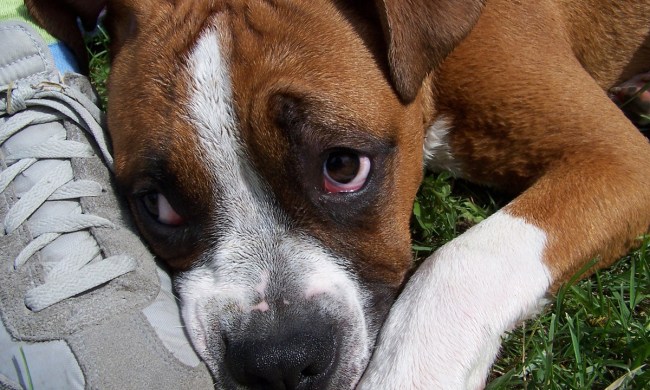We could have gone our whole lives without seeing a flea up close under a microscope — they’re terrifying! Most of the time, when you spot a flea, it’s outside in the grass, or unfortunately, on your dog or cat. It’s not pleasant, but at least at such a small size, it’s tricky to make out any kind of identifying details (imagine if one of these creatures was actually large enough to look at without magnification assistance).
While it might spook you to take a look at a flea up close, you should be even more concerned about spotting them in the wild, where they might be snacking on your pet and infesting your home.

What do fleas look like?
If you gaze upon the close version of this insect, you’ll spot the telltale six legs, brown or reddish body, and tiny needle-like appendages for sucking blood (fortunately no wings). Instead of flying, these little buggers jump from person to pet to grass. They feast on blood from mammals, so they’re coming for you and all your furry friends. To the naked eye, you’ll likely spot a tiny blackish speck that could be deep in your dog’s fur or even crawling on your floor.
What do fleas do to pets?
Mostly, eat them. As with other biting bugs, they inject a bit of anticoagulant in order to keep the blood flowing — that’s part of where the itchiness comes in. You’ll notice red spots and lots of scratching if they wind up on your dog or cat. These pests can also cause other more serious problems, such as tapeworm and anemia, so you want to take care of this quickly once you discover the infestation.
What treatment is available for fleas?
Luckily, a little maintenance usually prevents these parasites from moving in. You have a few options to use as a preventative, including oral, topical, or removable. Many choose to give their pets a chewable or a pill (and some combo pills are available that tackle multiple freeloaders at once, like heartworm and fleas).
Alternatively, look into collars that can come on and off as necessary or a gel that goes on the pet’s back. As with all medications, carefully follow the instructions. You don’t want to give your little guy too big a dose, which can cause sickness. If the fleas do set in, you should also look into shampoos and combs to tackle the issue.
In your house, you need to follow regular cleaning routines to ensure fleas stay out and don’t wind up living in your home between meals. That means vacuuming all carpet and washing pet bedding or pet clothes consistently, including blankets and sweaters. Remember that even if your animals have been treated, they still might come into contact with these bugs outside on walks. Fleas can easily hitch a ride and then find another unsuspecting critter in the house — for example, a dog could accidentally bring fleas in that then grab onto an indoor cat. We actually recommend treating all fuzzy household members even if they don’t spend any time around bugs themselves.



